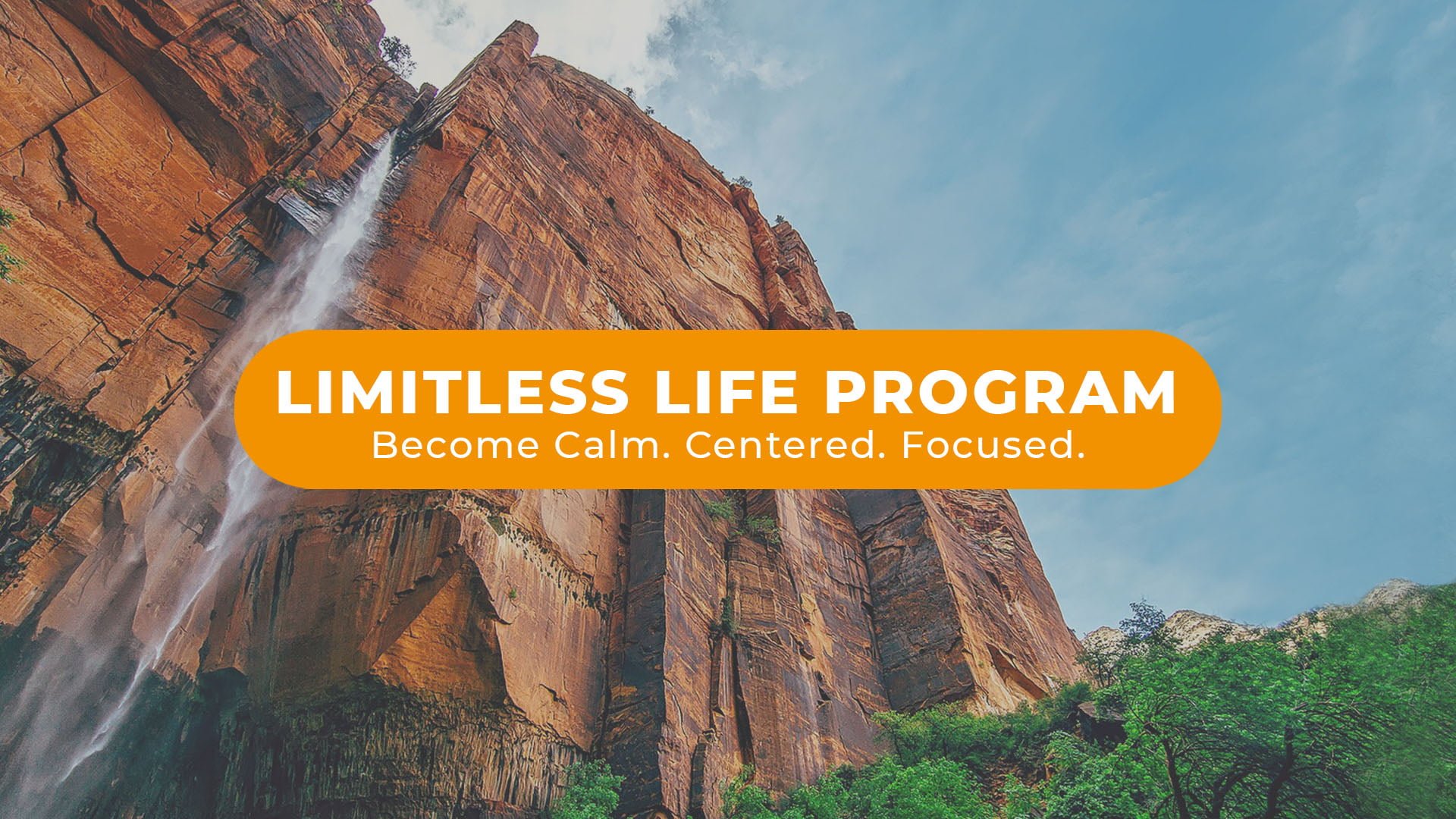Affiliate disclosure: Some of the links below are affiliate links, meaning, at no additional cost to you, I will earn a commission if you click through and make a purchase. As an Amazon Associate I earn from qualifying purchases.
How to maintain mindfulness, stay focused and avoid mind-wandering during meditation?
That is the question I get asked a lot.
Most beginners or aspiring meditators will agree that maintaining mindfulness and staying focused during meditation practice, especially in the sitting posture is a great challenge.
Even if you’re an advanced practitioner, I bet you faced this obstacle at some point in your meditative journey.
How to maintain mindfulness?
How to avoid mind-wandering?
How to stay focused?
Those are the questions people often ask.
So, in this article, I’m going to share with you the techniques I’ve been using. A lot of friends also have been using the same tricks. They’re not new, not an invention. Many meditation centers have been teaching them for years, if not centuries.
They’re quite simple. So simple that you might not even believe them.
But, they work. Effectively!
The secret is, you need to habituate them.
Let’s start.
Table of Contents
1. Understand mind-wandering

First, we need to understand that mind-wandering is part of nature. Our mind generates 60,000 to 80,000 thoughts a day.
It jumps from one thought to another at a lightning-fast pace.
In the Buddhist scripture, the mind is pictured as a monkey, hence the term “monkey mind.”
This condition has been going on for a very long time.
So, having a goal of achieving stillness of mind can be too much of a pressure. Targets like this are counter-productive in meditation practice. It makes the mind tense. In turn, the idea that the mind should be perfectly still during meditation will only tire your.
Instead, just relax.
Mind-wandering is not a problem.
The problem is if you forget to be mindful and drown yourself in the wanderings.
Because, if that happens, it means you’re not meditating. You’re just wasting your time.
Then, the next question is, how do we keep mindful? How to maintain it?
I’ve been using the following tricks with great success. Not just me, a lot of my friends have confirmed it too.
2. Practice in shorter duration, start small

Many people who don’t practice regularly want to practice longer. They think it will compensate for the lack of regularity.
Again, this idea will only add more pressure to the mind, making it non-conducive to meditation practice.
In meditation, the opposite tends to work better.
Try a shorter duration, but repeat it more often.
If you sit for thirty minutes but are often unaware that you are wandering, try fifteen minutes, or even five minutes.
If you usually practice once or twice a day, try three times or four times a day. A five-minute session will be easier to fit into your schedule.
Stop obsessing about the duration. Start working on the regularity.
By starting small, you’re lifting the burden off your shoulder. You’ll experience your mind is easier to relax.
You’ll find that you can maintain mindfulness easier in this more conducive state.
Don’t worry about the duration. If you practice regularly, you’ll be able to increase it gradually without much struggle.
So, please drop that sales or marketing mindset. Free yourself from targets and goals during practice. They won’t work!
3. The mental-noting technique

Several Buddhist meditation centers teach this technique to maintain mindfulness and avoid mind-wandering.
It is also called the labeling technique.
It’s quite simple.
You just take note mentally of anything that’s happening in your mind and body in the present moment.
If thought is arising, simply note “thought.”
If a feeling is arising, simply note “feeling.”
If memory is arising, simply note “memory.”
For bodily sensations like itching, pain, ache, numbness, simply note “itching”, “pain”, “ache”, numbness.”
And, so on. You got the idea.
No need to go into specific what thought or feeling is all about. Because you shouldn’t overthink or overanalyze things during meditation.
Overthinking or overanalyzing will make you lose awareness easier.
So, whatever is arising, just note it, and let it be. Don’t follow or get involved in it.
The mental noting is meant to be a trigger to bring back mindfulness, to keep the mind from wandering.
I have quite a lot of friends who have been using this technique successfully.
This technique works well, especially when observing bodily pain. It helps create some distance between the observer and the pain and it helps to see the pain as nature and not as “me” or “my pain”.
My favorite is the next technique.
4. The asking-question technique

I learned this technique from a Buddhist monk, a Burmese meditation master in vipassana retreats I attended. I also heard it advised in a dhamma talk on a different occasion, by another Buddhist monk from the Thai forest tradition.
It’s quite simple. You just make a habit of periodically asking these two questions, mentally:
- What is happening right now?
- What has stopped happening?
You don’t need to answer them. Don’t overthink or overanalyze things during meditation. The questions are meant to be triggers, to bring back awareness.
It might sound a lot since there are two questions. But, once you’ve habituated it, it will flow naturally. It doesn’t require much thought process. Your mind doesn’t even need to form the questions.
This technique works very well for me.
Because it’s so simple, I like it very much.
Once instilled, it will constantly remind you to be mindful.
In meditation practice, reminding yourself to be mindful is part of the right thought.
Now, you have alternatives. Experiment a bit. Find one that works best for you. Or, you can take advantage of both of them, depending on the situation.
5. The basic code of ethics
Unlike focus or concentration, a mental faculty you can develop by force, mindfulness is a delicate one. Developing mindfulness by force won’t work!
You can only cultivate mindfulness with a gentle approach. You do it by maintaining its continuity.
If you need a more technical explanation on the relationship between mindfulness and concentration, check this article on Mindfulness vs Concentration by Bhante Gunaratana.
It means that you need to practice mindfulness not only during your formal meditation practice like sitting, walking, or any other postures. You need to exercise it at all times, in all of your activities, in all situations.
This is where the basic code of ethics comes in.

Buddhist lay followers are always advised and encouraged to undertake and uphold the five precepts. I thought it was just for formality’s sake. I didn’t realize it has such a huge impact on meditation practice until years later.
What are the five precepts? They’re the Buddhist’s basic code of ethics (Pali: Pancasila). But, they’re pretty much universal:
- Abstinence from taking lives (yes, even mosquitos and ants)
- Abstinence from taking anything which is not given
- Abstinence from sexual misconduct
- Abstinence from speaking untruthfully
- Abstinence from consuming intoxicants
It might sound superstitious, but I’m telling you, it’s not.
You might think, how basic morality can have anything to do with one’s ability to stay focused and mindful.
I’ve been noticing people who are undertaking and upholding these five precepts. They tend to maintain awareness and stay focused easier in retreats as well as in their daily lives.
They tend to be more thorough and careful in everything they do.
For example, when walking, they try not to step on ants or other small living beings. When the mosquitos bite, they remember not to kill.
I notice this ongoing conditioning helps them stay mindful and keep their mind from wandering during their formal meditation practice.
On the flip side, I’ve also been noticing in quite a lot of cases where people are struggling in maintaining focus and awareness during meditation. Often, it turns out, they are not exercising the same carefulness and thoroughness in their daily lives.
Also, you might already know that in vipassana retreats, they usually require you to undertake three more additional precepts, making it eight precepts:
- Abstinence from taking food at the wrong time.
- Abstinence from dancing, music, visiting shows, flowers, make-up, the wearing of ornaments and decorations.
- Abstinence from a tall, high sleeping place
The addition makes the situation even more conducive for maintaining mindfulness.
Now, we know that the reasons behind the long-held tradition are not purely moral like exercising restraint but also technical.
And, you don’t need to be a Buddhist to take advantage of them.
You may want to know if you need to worry about having too much mindfulness.
Additional tips
Make sure you have enough good quality sleep. This one is non-negotiable.
Meditation is a physically demanding activity. If you don’t have enough quality sleep, you’ll easily get tired. You’ll struggle in your practice. As a result, you’ll find it hard to maintain mindfulness and stay focused.
A fit and energized body supports mindfulness and focus.
So, exercise regularly. Do some sports or some yoga, let your energy flow.
This 10-minute sitting meditation preparation exercise will help prepare your mind and body. I practice it every time before my sitting sessions and find it very effective.
And, don’t forget the balanced diet.
Conclusion
Now, you have all the tricks needed to help you maintain mindfulness and avoid mind-wandering during meditation.
Some important things are worth-repeating.
Mind-wandering is not a problem. Forgetting to be mindful is.
One of the most important things I’ve learned in my meditative journey is the key habit of continuous regular practice.
It’s a marathon, not a sprint.
Relax, conserve your energy. Don’t force yourself, but avoid being lazy.
Patience and persistence are the keys. Without them, all techniques will end up being useless.
Mindfulness is a very important aspect of meditation.
Even when you’re using a concentration-based meditation technique, you need mindfulness to help you stay focused.
Without mindfulness, you won’t be aware that your focus is drifting. For example, you might sit on your cushion for hours unaware that you’re day-dreaming.
Day-dreaming is a form of mind-wandering.
With mindfulness, you can acknowledge the situation immediately and gently bring your focus back to your initial object.
Mindfulness needs momentum to grow.
If you practice on and off, you won’t gain any momentum.
As a result, you will struggle every time you meditate and you’ll have no meaningful progress.
With momentum, you’ll be able to stay mindful with less wandering without much effort.
Have no goals or targets in mind while practicing.
Recommendation
Now, out there, you’ll find many meditation styles and techniques on offer based on different traditions. Many of them are valid. The differences are for accommodating different needs due to people’s diversity in personalities, characters, cultural backgrounds, upbringing, etc.
You’ll need to experiment a bit to find the right meditation approach that suits you the best.
If there are vipassana retreats conducted in or near your area, I’d advise you to attend one.
They are usually ten days in duration.
If that’s not convenient for you, consider taking a meditation online course. It will certainly help you to have regular practice to build a habit that facilitates transformation.
This is the one I highly recommend:

Meditation is a lifetime journey, so enjoy every moment of it.
My best wishes.
Related posts
- How to Stop Falling Asleep During Meditation? Try These 10 Actionable Tricks
- Most Shocking Meditation Myths and Misconceptions (What Meditation Is NOT)
- Practical Reasons to Meditate for Lazy People
- The Most Effective Hack for Letting Go (A Meditative Approach to Natural Acceptance)
- Effective Meditation Tricks and Hacks for Lazy People
Featured image by Free-Photos from Pixabay
- Too Much Mindfulness, Is There Such a Thing? - March 17, 2022
- 10 Ways Meditation Can Help Improve Your Finance (Number 9 Might Surprise You!) - January 7, 2022
- Forget Self-Improvement, Do This Instead! - September 16, 2021
